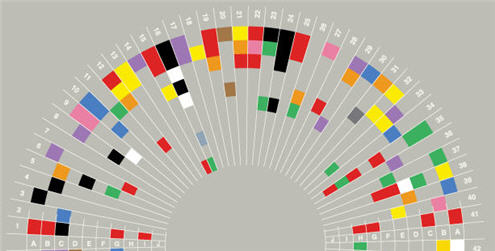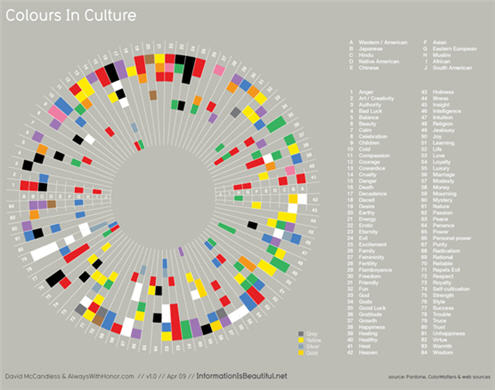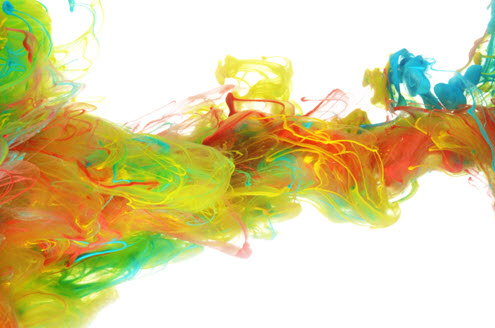colour & design surgery…how does culture influence colour?

Karen Haller
This is part of the colour & design surgery series, answering questions from clients and readers.
Question: “How is colour understood differently in different cultures?”
– reader, Melissa Lessi.
Answer: Great question. Colours are understood differently in different cultures because of the association, the meaning those colours have within that culture. Sometimes these associations have gained significance over many generations, if not hundreds of years. Often the original reason may no longer be known, slipping into folklore.
Giving meaning or association to a colour is our human way of seeking meaning within our environment, usually formed out of religious beliefs or from nature.
This is commonly known as colour symbolism, colour meaning or colour association.
examples of colour symbolism
As you will see by clicking on the Colours in Culture chart above, different cultures use different colours to symbolism the same association. Interestingly, the colours will often be its complementary opposite.
good luck
red – China, Eastern European, Africa
green – Western, Japan, Muslim
death
black – Western, Japan, Native American
white – China, Hindu
wisdom
purple – Japan, Hindu
brown – Native American
blue – Eastern Europe
colour scheme
When creating a colour scheme for a client, it is important to understand the significance of those colours in relation to their ethnicity and their target market.
colour psychology
Whilst colour symbolism is a conditioned conscious association to colour, the psychology of any particular colour is largely unconscious. And whilst the psychological meaning of any given colour universally holds true, cultural associations may significantly influence colour choices.
If you enjoyed reading this article, you may also like to read other articles on colour symbolism.
Images from Information is Beautiful





It’s fascinating how different people’s perceptions can be depending on their culture and reminds us that we need to do due diligence and understand our clients and their background in order to meet their needs – whatever their business. Thank you for this interesting piece, Karen.
I agree with you Felicity, colour, culture, perception is fascinating and so important to be aware of. Then throw the psychology of colour into the mix!
There is so much to learn about culture. It’s fascinating that opposites are in play here too. Anything helps us to better understand each other is of huge benefit for everyone. Thank you for sharing your knowledge with us Karen.
I completely agree Tanya, learning from other cultures is invaluable.
Yes, there does seem to be a them today. We must all be tuned into the same color wavelength. Looking across cultures is one of my favorite sources of inspiration. Thanks for sharing your post for Colorful Friends Friday!
You’re welcome Kate. It’s never a coincidence with creative colour minds are in tune 😉
Hey even i think culture plays a very important role while deciding the colours. Different cultures have different perception for the same colours. But these days people are willing to accept different cultures and on the same time different colours too. Being an Indian i love bright colours. But i am working in a export house and i can see how Indian motifs and colours are acceptable in every part of the world. Same goes with other cultures too. 🙂
I agree Deepika, the more we are exposed to other cultures the more we integrate, taking inspiration and the blending of ideas.